Unveiling the Enigmatic World of Mayan Mathematics
Step into a realm where numbers held a mystifying power and calculations were performed with striking precision. In this exclusive exploration, we will embark on an extraordinary journey to uncover the long-hidden secrets of Mayan mathematics. Prepare to be captivated by a number system that defies conventional understanding and discover the intricate web of mathematical concepts intricately woven into the fabric of Mayan culture. From basic operations and the role of zero to advanced mathematical concepts and astronomical connections, we will delve into the astonishing achievements and contributions made by the Mayans to the world of mathematics. Join us as we decipher ancient texts and compare Mayan mathematics with other ancient systems, ultimately unraveling a captivating legacy that still touches modern mathematics. Are you ready to unlock the secrets of Mayan mathematics and witness the ingenuity of a remarkable civilization?
Contents
- The Mayan Number System
- Basic Mathematical Operations
- The Role of Zero
- Advanced Mathematical Concepts
- Mathematical Astronomical Connections
- Mayan Mathematical Achievements
- Deciphering Mayan Mathematical Texts
- Comparisons with Other Ancient Mathematical Systems
- Contributions to Modern Mathematics
- Conclusion
- Frequently Asked Questions
- References
-
Frequently Asked Questions
- 1. What is the Mayan number system?
- 2. How did the Mayans perform basic mathematical operations?
- 3. What role did zero play in Mayan mathematics?
- 4. What are some advanced mathematical concepts in Mayan mathematics?
- 5. Are there any connections between Mayan mathematics and astronomy?
- 6. What were some of the Mayan mathematical achievements?
- 7. How do researchers decipher Mayan mathematical texts?
- 8. How does Mayan mathematics compare to other ancient mathematical systems?
- 9. What contributions did Mayan mathematics make to modern mathematics?
- 10. What can we learn from studying Mayan mathematics today?
- References
- Read More
The Mayan Number System
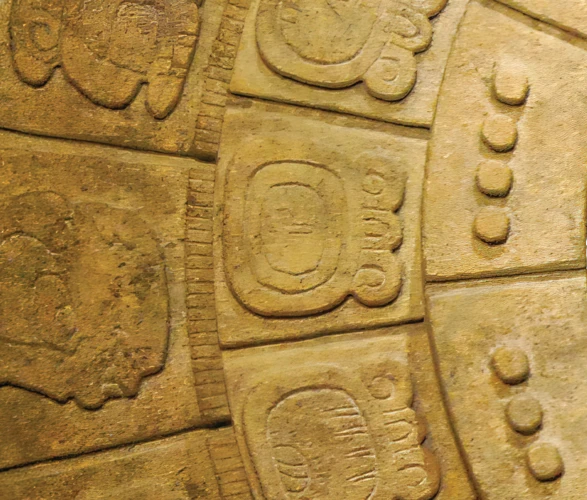
The Mayan Number System:
At the heart of Mayan mathematics lies a number system that displays an intricate understanding of quantity and value. Unlike the familiar decimal system used today, the Mayans employed a base-20 system, also known as a vigesimal system. This means that instead of counting in tens, they counted in twenties. In the Mayan number system, each digit is represented by a combination of dots (one) and bars (five). While the dot is used to signify an individual unit, a bar symbolizes five units. By combining these elements in different ways, the Mayans were able to represent numbers up to the thousands, millions, and beyond. To illustrate, let’s consider the number 325. In the Mayan number system, this would be represented as three bars (or fifteen units) followed by five dots (or five units), and finally, two bars (or ten units). This unique system allowed the Mayans to perform complex mathematical calculations and record numerical information with astounding accuracy.
It is important to note that the Mayan number system was a positional system, which means that the value of each digit is determined by its position within the number. Similar to the way the decimal system uses place value, the Mayan system assigned different values to the same symbol depending on its position. For example, a dot in the units place represents one unit, while a dot in the twenties place represents twenty units. This place value system made it possible for the Mayans to manipulate numbers of different magnitudes with relative ease.
The Mayan number system also incorporated a unique symbol for zero, which played a significant role in their mathematical calculations. By representing zero as a shell-shaped symbol, the Mayans were able to distinguish it from other numbers and utilize it in various mathematical operations. The concept of zero was revolutionary in ancient mathematics and paved the way for advancements in arithmetic and other branches of mathematics.
The Mayan number system offers a window into the rich mathematical heritage of this ancient civilization. Its exploration sheds light on the ingenuity and sophistication that the Mayans possessed in their mathematical understanding, setting them apart from other cultures of their time. With a firm understanding of the Mayan number system, we can now delve into the basic mathematical operations performed by the Mayans, which further showcase their mathematical prowess.
Basic Mathematical Operations
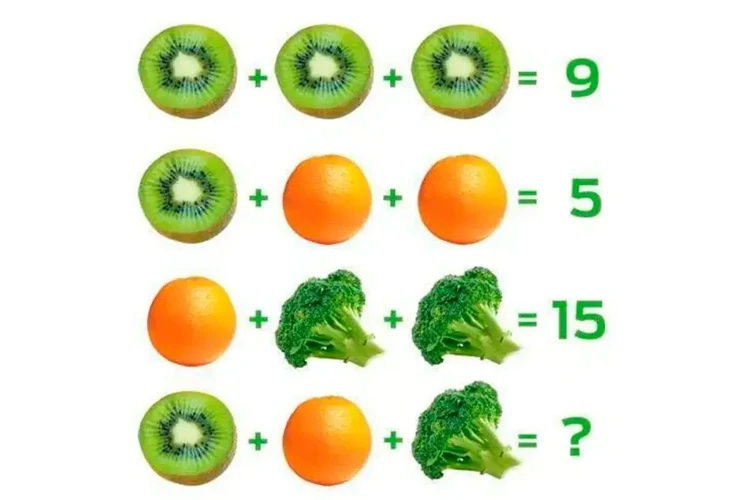
Within the realm of Mayan mathematics, basic mathematical operations held a prominent place, demonstrating the sophistication of their numerical understanding. The Mayans possessed remarkable skills in performing addition, subtraction, multiplication, and division. Addition and subtraction were carried out by combining or subtracting the corresponding bars and dots, while multiplication involved the process of repeated addition. For division, the Mayans utilized a method known as “presentation,” which was similar to long division. This involved finding the closest multiple of the divisor and subtracting it repeatedly until the desired result was obtained. The Mayans’ ability to perform these operations with ease and precision allowed them to solve complex mathematical problems and develop intricate calculations related to various aspects of their daily lives, such as trade, architecture, and astronomical observations. This profound understanding of basic mathematical operations served as the foundation for the Mayans’ advanced mathematical concepts and achievements, which we will explore further in this journey of unraveling the secrets of Mayan mathematics.
Addition and Subtraction
Addition and Subtraction:
In the realm of Mayan mathematics, addition and subtraction formed the basis of numerical calculations. The Mayans performed these operations using a combination of the dot (one) and bar (five) symbols found within their number system. To add two numbers together, the Mayans would simply combine the corresponding dots and bars. For example, to add 7 and 9, they would represent 7 as two bars and two dots, and 9 as four bars and one dot. Combining these representations, they would end up with six bars and three dots, which equates to the number 16.
Subtraction in the Mayan system followed a similar process. To subtract one number from another, the Mayans compared the dot and bar representations of the two numbers and determined the difference. If the number being subtracted had more dots or bars in a particular place value, they would remove the corresponding dots or bars from the larger number. For instance, to subtract 5 from 9, they would represent 9 as four bars and one dot, and 5 as one bar, and then remove the one bar from the representation of nine. This would leave them with three bars and one dot, which represents the number 4.
To aid in performing these calculations accurately, the Mayans used a variety of mathematical notations. One of the most significant notations was the use of a shell-shaped symbol to represent zero. By incorporating zero into their number system, the Mayans were able to handle situations where the result of a subtraction operation would result in a negative number. This was an innovative concept at the time and contributed to the advancement of mathematics.
The proficiency of the Mayans in performing addition and subtraction is evident in their architectural designs and astronomical observations. These impressive calculations played a crucial role in creating structures aligned with celestial events and accurately predicting celestial phenomena. The Mayans’ exploration of addition and subtraction extended beyond practical calculations; they also applied these operations to their complex calendar system, which will be further examined later in this article. The integration of addition and subtraction into various aspects of Mayan culture demonstrates the depth of their mathematical understanding and their ability to apply these operations in diverse contexts.
Multiplication and Division
Multiplication and Division:
The Mayans had developed efficient methods for performing multiplication and division, allowing them to solve complex mathematical problems using their unique number system. To multiply two numbers, the Mayans utilized a method known as the Cross Multiplication Algorithm, which involved adding the value of each digit in one number to the corresponding digits in the other number. This process was carried out from right to left, similar to how we do multiplication in the decimal system. However, instead of multiplying each digit, the Mayans used the vigesimal system to determine the appropriate value for each position. By adding the values of the corresponding digits, they were able to obtain the product of the two numbers.
Let’s take an example to illustrate this method. Suppose we want to multiply the Mayan numbers 13 and 7. We start by breaking down the numbers into their digit values: 13 is composed of one ten and three units, and 7 consists of one five and two units. Using the Cross Multiplication Algorithm, we add the value of each digit to its corresponding position in the other number: 3 units multiplied by 7 gives us 21 units, and 1 ten multiplied by 7 results in 7 tens. Finally, we combine these values to get the Mayan representation of the product, which in this case is 7 tens and 20 units (27).
Division in the Mayan number system follows a similar approach. The Mayans utilized a method called the Long Division Algorithm, which involved repeated subtraction to determine the quotient and remainder. They would start by subtracting the divisor from the dividend repeatedly until the dividend was smaller than the divisor, keeping track of the number of subtractions performed. The quotient was obtained by counting the number of subtractions, and the remainder was the remaining value after the process was complete.
To further illustrate, let’s consider the division of 114 by 9. The Mayans would subtract 9 from 114 continuously until the resulting value was less than 9. They would keep track of the number of subtractions performed, which in this case would be 12. The quotient is then determined as 12, and the remainder is the difference between the final value (3) and the divisor (9), resulting in a remainder of 3.
The Mayan methods of multiplication and division showcase their ingenuity and the depth of their mathematical understanding. It is fascinating to observe how they developed their own algorithms to perform these operations using their base-20 number system. These methods allowed the Mayans to solve complex mathematical problems and perform calculations in various fields, including astronomy and architectural design, which we will explore further in the following sections.
The Role of Zero
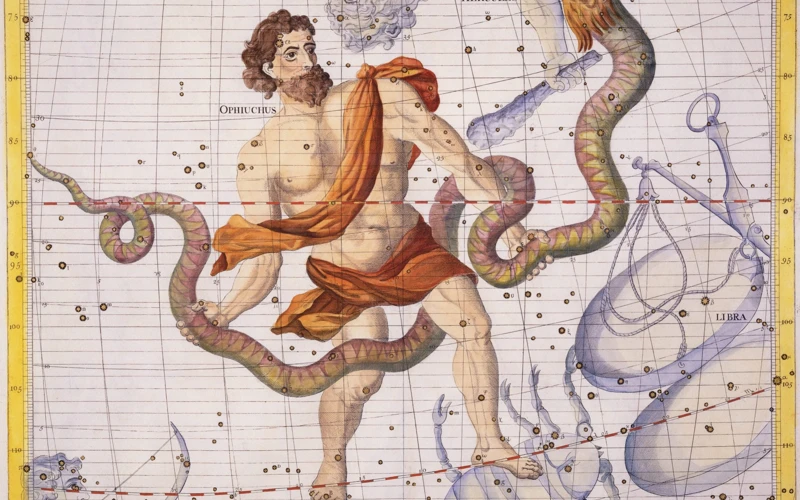
The Role of Zero:
In the realm of mathematics, zero holds a significant position as both a placeholder and a number in itself. The Mayans were pioneers in recognizing the importance of zero and incorporating it into their number system. By integrating zero into their mathematical calculations, the Mayans were able to represent the absence of quantity and perform complex operations that were previously impossible.
Zero, represented by the distinctive shell-shaped symbol, served as a placeholder in the Mayan number system. It allowed them to denote empty places in numbers, signifying the absence of a value. This positional notation made it possible for the Mayans to represent and manipulate large numbers with ease. Zero acted as a catalyst for the development of the place value system, an essential concept in mathematics that continues to be used today.
Beyond its role as a placeholder, zero held its own value in Mayan mathematics. The Mayans recognized zero as a number, distinct from other numerical values. They understood that by assigning a value to zero, it became a significant tool in calculations and mathematical operations. It is worth noting that the concept of zero as a number was not universally acknowledged in ancient civilizations. The Mayans’ recognition of zero’s numerical value was a groundbreaking advancement in mathematical thinking.
Through their understanding and utilization of zero, the Mayans were able to perform addition, subtraction, multiplication, and division more efficiently. Zero became an indispensable part of their mathematical toolkit, enabling them to solve complex problems involving quantities and measurements. This innovative approach to zero set the stage for further advancements in mathematics, as it paved the way for the development of algebra and calculus in later civilizations.
The Mayans’ recognition of zero’s role in mathematics demonstrates their exceptional intellectual capabilities and their remarkable understanding of the fundamental principles of numbers. It is a testament to their mathematical genius that they not only embraced zero as a placeholder but also assigned it a numerical value. In the next section, we will explore advanced mathematical concepts employed by the Mayans, including their sophisticated place value system, their use of mathematical notations, and their intricate connection between mathematics and astronomy.
Advanced Mathematical Concepts
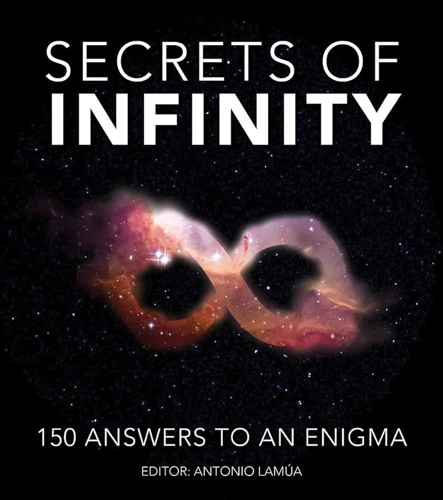
Advanced Mathematical Concepts:
Building upon the foundational principles of the Mayan number system, the ancient Mayans developed a range of advanced mathematical concepts that demonstrated their deep understanding of mathematics. One of the key concepts was the place value system, which greatly enhanced their ability to represent and manipulate numbers of varying magnitudes. By assigning different values to the same symbols based on their position within a number, the Mayans could perform complex calculations with ease. This ingenious system allowed them to work with astronomical numbers, track time, and engage in intricate architectural designs. Additionally, the Mayans employed mathematical notations to record their calculations and discoveries. These notations included hieroglyphic representations and an intricate system of dots and bars. The Mayans’ keen understanding of mathematics also materialized in the development of their intricate and accurate calendar system, which played a crucial role in their society and cultural practices. With a profound grasp of mathematics, the Mayans demonstrated their remarkable intellectual abilities and left a lasting legacy in the field of mathematics.
Link: Exploring Lesser-Known Constellations
Place Value System
Place Value System:
The Mayan number system’s place value system was a key component that allowed for the representation and manipulation of numbers of varying magnitudes. Similar to the decimal system used today, the place value system assigns different values to the same symbol based on its position within a number. This system enabled the Mayans to express numbers using a combination of dots and bars while accurately conveying their numerical value.
To understand the Mayan place value system, let’s examine a numerical example. Consider the number 437. In the Mayan system, this would be represented as four dots in the hundreds place, followed by three bars in the twenties place, and finally, seven dots in the ones place. By assigning different values to these symbols based on their position, the Mayans could express the value of the number 437 with precision.
The place value system relied on a hierarchical structure wherein each position represented a multiplying factor of twenty. The rightmost position represented units, followed by twenties, four hundred (which was represented by four bars), eight thousand (eight bars), and so on. By multiplying the value of each symbol by the appropriate factor, the Mayans were able to calculate and express numbers tens of thousands or even millions.
To visually represent the Mayan place value system, a table can be used. In the table, each row represents a different position, and the symbols used by the Mayans are assigned their corresponding values. Here is an example:
| Position | Symbol | Value |
|---|---|---|
| Ones | dot | 1 |
| Twenties | bar | 20 |
| Four Hundreds | four bars | 400 |
| Eight Thousands | eight bars | 8,000 |
This table showcases the symbols used by the Mayans to represent different positions and their corresponding values within the Mayan place value system.
The Mayan place value system allowed for efficient calculations and accurate representation of numbers, contributing to the overall sophistication of their mathematical achievements. It provided a foundation for performing various mathematical operations and paved the way for advancements in other branches of mathematics. With a solid understanding of the place value system, we can delve deeper into other fascinating aspects of Mayan mathematics, such as the intricate Mayan calendar system and their unique mathematical notations.
Mayan Calendar
Mayan Calendar:
The Mayan calendar is a remarkable testament to the advanced knowledge and mathematical prowess of the Mayans. With a profound understanding of astronomy and a keen observation of celestial phenomena, the Mayans developed a calendar system that not only traced the passage of time but also played a crucial role in their religious and cultural practices.
The Mayan calendar consisted of various interconnected cycles that operated on different time scales. One of the most famous cycles is the Long Count, which was primarily used for tracking historical events and marking significant dates. The Long Count is based on a base-20 number system, similar to the Mayan numerical system, and it measures time in terms of baktuns (cycles of 144,000 days). This calendar system allowed the Mayans to record dates over incredibly long periods, spanning thousands of years.
Another important cycle in the Mayan calendar is the Haab, which is a solar calendar consisting of 18 months of 20 days each, followed by a short month of 5 days called the “Wayeb.” The Haab calendar helped the Mayans synchronize their agricultural activities with the changing seasons, ensuring the optimal timing for planting, harvesting, and other agricultural practices. The Wayeb period was considered a time of misfortune, and special rituals and ceremonies were conducted to appease the deities during this time.
In addition to the Long Count and the Haab, the Mayans also utilized a sacred calendar known as the Tzolk’in. The Tzolk’in is a 260-day cycle that combines 20 day signs with 13 numbers. Each day in the Tzolk’in calendar is characterized by a unique combination of a day sign and a number, creating a repetitive pattern that repeats every 260 days. This calendar was deeply intertwined with religious practices and was believed to have significant astrological and spiritual implications.
The intricate interplay between these different calendar cycles allowed the Mayans to track and predict celestial events such as eclipses, solstices, and equinoxes. It also enabled them to align religious ceremonies, rituals, and agricultural activities according to the cycles of the cosmos. The Mayans believed that time was cyclical, and the calendars played a crucial role in navigating the cosmic rhythm of life.
The Mayan calendar system not only demonstrates the advanced mathematical and astronomical knowledge of the Mayans but also highlights their holistic worldview, where the movements of celestial bodies were interconnected with everyday life. It remains an extraordinary testament to their mathematical achievements and the profound reverence they had for the mysteries of the universe. To explore further connections between mathematics and astronomy, you can read more about the harmonizing effects of trine aspects in astrology or delve into the fascinating realm of zodiac signs compatibility.
Mathematical Notations
Mathematical Notations:
The Mayans developed a comprehensive set of mathematical notations that allowed them to express complex calculations and numerical relationships. These notations consisted of a combination of dots, bars, and other symbols. Let’s explore some of the key notations used by the Mayans:
1. Dots and Bars: As mentioned earlier, the Mayans represented numbers using dots (for one) and bars (for five). These symbols were combined in various ways to represent different values, reflecting the vigesimal nature of their number system. For instance, a dot could be paired with a bar to represent six, while two bars and three dots together could denote thirteen. This systematic use of dots and bars made it possible to represent large numbers in a concise and efficient manner.
2. Face Glyphs: In addition to dots and bars, the Mayans also employed face glyphs as part of their mathematical notations. These face glyphs represented specific numerical values and were often used in conjunction with dots and bars. For example, a glyph depicting a closed eyelid represented the value zero, emphasizing the significant role that zero played in Mayan mathematics.
3. Place Value Notations: Similar to the decimal system, the Mayan number system relied on place value notation. To signify the position of a digit within a number, the Mayans used a shell-shaped symbol to represent zero in the units place. In other positions, a bar was used to symbolize the value of five times the place value. The combination of dots and bars within each position indicated the remaining values.
4. Glyphs for Operations: The Mayans also developed glyphs to represent mathematical operations such as addition, subtraction, multiplication, and division. These glyphs, along with the numerical notations, allowed the Mayans to perform complex calculations and record their results in a concise visual form.
It’s important to note that Mayan mathematical notations were not limited to just numerical calculations. They were also used extensively in recording time, astronomical observations, and architectural design. These notations were crucial in conveying mathematical concepts and facilitating communication within Mayan society.
The Mayans’ mathematical notations were a testament to their advanced understanding of mathematics. Through the innovative use of dots, bars, face glyphs, and place value notations, they were able to express intricate numerical relationships and perform calculations with remarkable precision. The sophistication and precision of Mayan mathematical notations are a testament to the intellectual prowess of this ancient civilization.
Mathematical Astronomical Connections
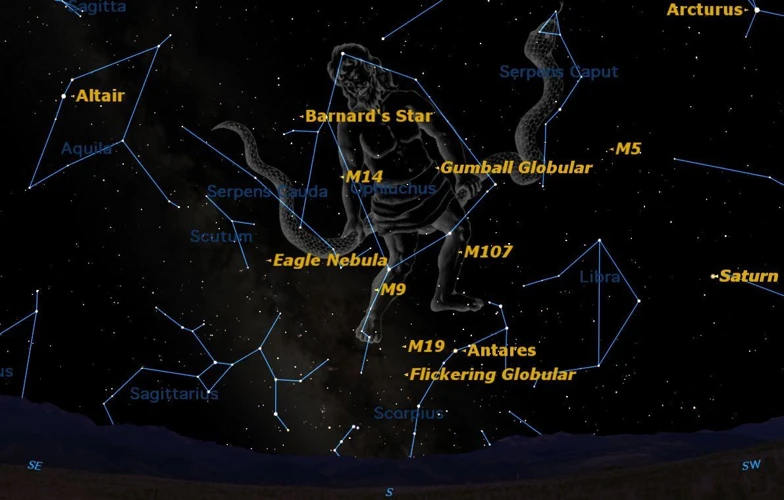
Mathematical Astronomical Connections:
The ancient Maya were not only skilled mathematicians but also avid astronomers. Their deep understanding of mathematics and their observations of the celestial bodies led to the creation of intricate connections between the two fields.
1. Alignment of Structures: The Mayans possessed advanced architectural knowledge, which allowed them to construct buildings and temples with remarkable precision. These structures were carefully aligned with astronomical phenomena. For instance, the layout of the famous pyramid of Chichen Itza in Mexico aligns with the position of the sun during the equinoxes, creating a stunning visual effect that mimics the appearance of a serpent slithering down the pyramid’s staircase. This architectural feat demonstrates the mathematical calculations required to achieve such precise alignments.
2. Calendar Systems: The Maya developed an incredibly accurate calendar system that integrated astronomical observations. Their Long Count calendar, for example, was based on cycles and measured time in units called kin, uinal, tun, k’atun, and b’ak’tun. Each of these units represented a specific number of days, combining both mathematical and astronomical elements. The Maya also created the Haab calendar, which was a solar calendar consisting of 365 days, divided into 18 months of 20 days each, with an additional period of 5 unlucky days. These calendars allowed the Mayans to track celestial events, such as solstices, equinoxes, and important astronomical alignments.
3. Venus Observations: Venus held great significance in Mayan astronomy, and the Mayans carefully observed its movements. They discovered that Venus follows an eight-year cycle before it returns to its original position in the sky. This astronomical phenomenon was associated with important events and was incorporated into their calendar calculations. By tracking the movements of Venus and other celestial bodies, the Mayans were able to maintain a sophisticated understanding of the celestial world.
4. Mathematical Notations: The Mayans developed a system of mathematical notations that were influenced by their astronomical observations. They often depicted astronomical symbols within mathematical calculations, highlighting the interconnectedness of their mathematical and astronomical knowledge.
The mathematical astronomical connections of the Mayans showcase their deep appreciation for the celestial world and their ability to incorporate astronomical observations into their mathematical understanding. These connections allowed them to accurately track time, predict celestial events, and create awe-inspiring architectural marvels. The Mayan civilization stands as a testament to the profound intersection between mathematics and astronomy and the enduring legacy of their combined knowledge.
Mayan Mathematical Achievements
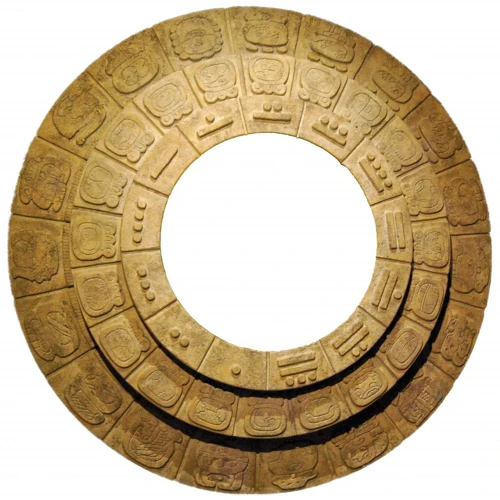
Mayan Mathematical Achievements:
The Mayans made remarkable strides in the field of mathematics, leaving behind a legacy of astonishing achievements. With their advanced knowledge and mathematical understanding, they applied their skills to enhance various aspects of their civilization. One notable achievement is their architectural design, where they demonstrated an exceptional grasp of geometry and measurement. The Mayans developed intricate mathematical principles to construct awe-inspiring structures such as temples, pyramids, and observatories with remarkable precision. Their precise calculations ensured that these structures aligned with celestial events, emphasizing their deep connection to astronomy. Speaking of which, the Mayans also made significant astronomical observations, accurately tracking the movements of celestial bodies and developing an elaborate calendar system that harmonized with their mathematical calculations. This extraordinary grasp of astronomy allowed them to predict celestial events, eclipses, and solstices with incredible accuracy. Through mathematical notations, the Mayans recorded and transmitted their mathematical knowledge through generations, leaving behind codices and glyphs that have been decoded by modern scholars. The Mayans’ mathematical achievements spanned a wide range of domains, demonstrating their sophistication and profound understanding of mathematical concepts.
Architectural Design
Architectural Design:
The Mayans were not only exceptional mathematicians but also skilled architects who incorporated their mathematical knowledge into the construction of their impressive cities and structures. Their architectural designs were a testament to their advanced understanding of geometry, symmetry, and spatial relationships. The use of precise measurements and calculations allowed the Mayans to create magnificent buildings that blended harmoniously with the natural landscape.
One notable example of their architectural prowess is seen in the construction of pyramids, which were not only religious monuments but also mathematical masterpieces. These pyramids, such as the iconic Pyramid of Kukulcan at Chichen Itza, showcase the Mayans’ understanding of geometric principles and astronomical alignments. The precise orientation of the pyramids with respect to the cardinal directions and celestial events demonstrates their deep connection between mathematics, cosmology, and religious beliefs.
The Mayans employed various mathematical concepts in their architectural designs. They used the concept of ratios and proportions to ensure a balanced and aesthetically pleasing structure. Symmetry played a crucial role in their designs, with many buildings exhibiting bilateral symmetry to create a sense of visual harmony. The integration of mathematical principles into the architectural layout allowed the Mayans to create spaces that were not only functional but also visually captivating.
In addition to pyramids, the Mayans built intricate palaces, plazas, and observatories, all showcasing their mathematical ingenuity. The accurate alignment of buildings with astronomical events, such as the solstices and equinoxes, suggests the Mayans’ sophisticated understanding of celestial mechanics. These architectural marvels serve as a testament to the Mayans’ ability to apply mathematical concepts in practical and awe-inspiring ways.
The Mayans’ architectural designs were not only visually striking but also highly functional. They incorporated mathematical calculations to ensure structural stability, especially in earthquake-prone regions. By utilizing their mathematical prowess, the Mayans were able to construct buildings that could withstand the test of time, many of which remain standing to this day.
The integration of mathematics into architectural design was a testament to the Mayans’ holistic approach to knowledge and their belief in the interconnectedness of different disciplines. Their remarkable architectural achievements stand as a testament to their mathematical and engineering skills, leaving a lasting legacy that continues to inspire awe and admiration in the modern world.
Astronomical Observations
Astronomical Observations:
The Mayans were keen astronomers, and their observations of celestial bodies played a crucial role in their mathematical calculations and predictions. They meticulously recorded and analyzed the movements of the sun, moon, planets, and stars, developing a deep understanding of the astronomical phenomena they observed. Through their astronomical observations, the Mayans were able to accurately determine the length of a solar year, which they found to be approximately 365.2420 days, remarkably close to the modern value of 365.2425 days.
One of the most awe-inspiring Mayan astronomical structures is the ancient city of Chichén Itzá. Its iconic pyramid, known as El Castillo, showcases the Mayans’ precise understanding of astronomical alignments. Twice a year, during the spring and fall equinoxes, the positioning of the pyramid causes a serpent-like shadow to descend the steps. This remarkable phenomenon served as a visual representation of the changing seasons and the Mayans’ ability to decipher the cosmic dance happening above.
The Mayans’ observations also allowed them to develop an accurate lunar calendar with a duration of approximately 29.5 days per month. In addition to this lunar calendar, they also maintained a separate calendar based on the movements of Venus, a planet known to them as the “morning star” or the “evening star.” These calendars were not only used for tracking time but also for determining auspicious dates for various religious ceremonies and important events.
By combining their extensive astronomical knowledge with their advanced mathematical concepts, the Mayans were able to make predictions about celestial events, such as eclipses, with remarkable accuracy. They recognized the patterns in the lunar and solar cycles, allowing them to predict upcoming eclipses and make astronomical calculations that guided their societies in agriculture, religious ceremonies, and navigation.
The Mayans’ deep connection with astronomy is evident in their architectural designs as well. Many of their structures feature alignments with specific celestial events, such as solstices and equinoxes. These precise alignments showcase the Mayans’ reverence for the cosmos and their deep understanding of the link between celestial movements and their physical world.
The Mayans’ astronomical observations not only contributed to their understanding of the universe but also had practical applications in their daily lives. By studying the heavens, they were able to develop sophisticated mathematical concepts and refine their calendars, ultimately showcasing their mathematical and astronomical prowess. These observations serve as a testament to the Mayans’ intellectual achievements and their ability to integrate mathematics and astronomy to unravel the secrets of the universe.
Deciphering Mayan Mathematical Texts
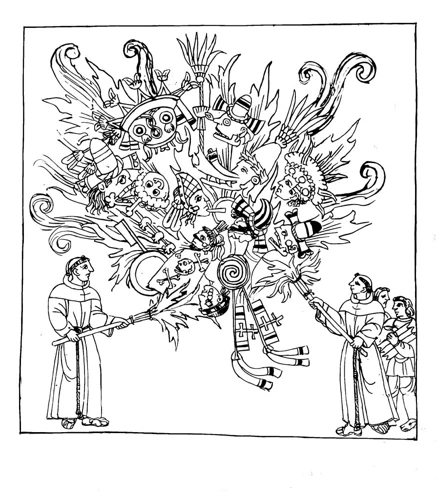
Deciphering Mayan Mathematical Texts:
Decoding the intricate mathematical texts left behind by the Mayans is a fascinating endeavor that offers valuable insights into their numerical knowledge and problem-solving techniques. These ancient texts, inscribed on stone monuments, stelae, and hieroglyphic manuscripts, provide a glimpse into the mathematical achievements of the Mayan civilization.
One of the key challenges in deciphering Mayan mathematical texts is understanding the complex hieroglyphic writing system. The Mayans used a combination of phonetic glyphs, which represented sounds, and logograms, which represented whole words or concepts. These hieroglyphs were organized in a specific order, known as the “boustrophedon” style, where the lines of text alternated direction from left to right and right to left. This unique arrangement adds to the complexity of deciphering the mathematical content within the texts.
To unravel the mathematical mysteries embedded in these texts, researchers rely on a combination of linguistic analysis, archaeological context, and comparisons with known Mayan mathematical knowledge. By identifying recurring mathematical symbols and patterns, scholars have been able to decipher mathematical operations, astronomical calculations, and even calendar systems.
One remarkable discovery made through the decoding of Mayan mathematical texts is the advanced understanding of astronomical phenomena such as eclipses and planetary positions. The Mayans were meticulous record-keepers, and their mathematical texts often contain detailed astronomical observations and predictions. By analyzing these records, researchers have gained valuable insights into Mayan cosmology and their sophisticated understanding of celestial events.
Another aspect of Mayan mathematical texts is the presence of mathematical problems and equations. These texts often posed mathematical puzzles and challenges, inviting the reader to solve them. By examining the problem structure and the accompanying mathematical symbols, researchers have been able to uncover the methods and algorithms the Mayans used to solve these complex equations.
The deciphering process of Mayan mathematical texts is not without its challenges, as many aspects of their mathematical knowledge still remain elusive. However, through ongoing research and collaboration, scholars continue to make remarkable strides in deciphering and interpreting these ancient mathematical texts. This ongoing work allows us to gain a deeper understanding of the mathematical sophistication achieved by the Mayans and sheds light on their contributions to the field of mathematics.
Deciphering Mayan mathematical texts is a testament to the enduring legacy of this remarkable civilization and their unyielding pursuit of mathematical knowledge. As more texts are decoded and analyzed, new revelations about the intricacies of Mayan mathematics are unveiled, further expanding our understanding of this ancient numerical tradition.
Comparisons with Other Ancient Mathematical Systems
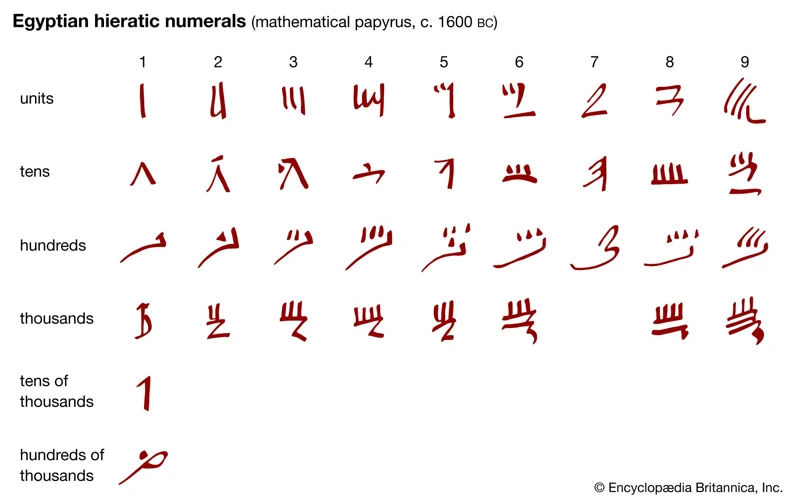
Comparisons with Other Ancient Mathematical Systems:
To truly appreciate the depth of the Mayan mathematical system, it is crucial to compare and contrast it with other ancient mathematical systems from around the world. One notable civilization that had a profound impact on the development of mathematics was ancient Egypt. Like the Mayans, the Egyptians used a positional number system, but instead of a base-20 system, they employed a base-10 system. The Egyptian number system relied heavily on hieroglyphic symbols, representing powers of 10 and using repetition to signify higher numbers. However, unlike the Mayans, the Egyptians did not have a symbol for zero, which limited their ability to perform complex calculations.
Another ancient civilization renowned for its mathematical achievements was ancient Greece, with notable mathematicians such as Pythagoras and Euclid. The Greeks had a more refined understanding of geometric concepts, which they used extensively in their mathematical investigations. They introduced the concept of proof and developed sophisticated techniques for geometry, trigonometry, and arithmetic. While the Greeks did not have a positional number system like the Mayans or the Egyptians, they devised their own system of symbols to represent numbers. Instead of using individual symbols for each number, they employed letters from the Greek alphabet.
In contrast, the Mayan number system, with its base-20 vigesimal system and positional notation, showcased a remarkable level of sophistication. The Mayans surpassed many other ancient civilizations in terms of their ability to calculate large numbers, perform complex arithmetic operations, and even explore astronomical phenomena. The integration of zero and the clever use of dots and bars to represent various quantities demonstrated an advanced understanding of mathematics for the time.
While each of these ancient mathematical systems had its own unique features and contributions, the Mayan system stands out for its intricacy, versatility, and ability to represent numbers of varying magnitudes. The Mayan civilization’s mathematical achievements, along with their calendar systems and architectural wonders, highlight their advanced understanding of mathematics and its applications. By comparing the Mayan mathematical system with those of other ancient civilizations, we gain a broader perspective on the evolution and diversity of mathematical thought throughout history.
Link: exploring-zodiac-signs-compatibility
Contributions to Modern Mathematics
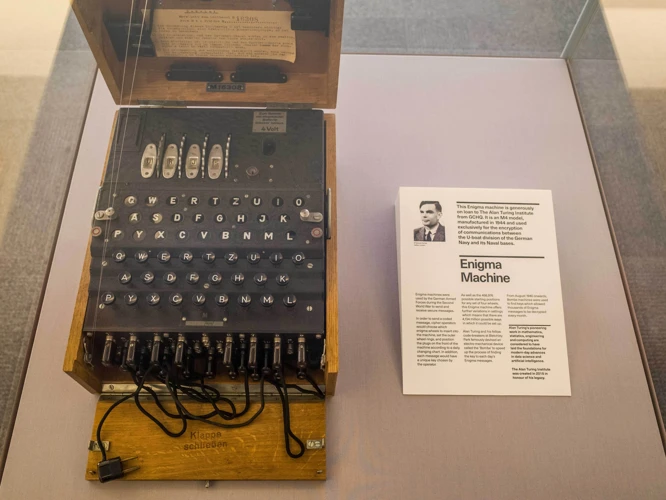
Contributions to Modern Mathematics:
The impact of Mayan mathematics extends far beyond the ancient civilizations that flourished centuries ago. The discoveries and innovations made by the Mayans have left a lasting imprint on the field of mathematics, influencing and inspiring modern mathematicians in numerous ways.
One significant contribution of the Mayans to modern mathematics lies in their use of a positional number system. The Mayan system employed a place value system similar to the decimal system used today. This concept formed the foundation for the development and widespread adoption of positional notation in mathematics. The use of place value greatly simplified mathematical calculations and paved the way for the emergence of advanced mathematical concepts.
The Mayans’ recognition and inclusion of zero as a numerical value revolutionized mathematics. The concept of zero, as represented by the shell-shaped symbol in the Mayan number system, was a crucial development that laid the groundwork for algebra and calculus. The inclusion of zero as a placeholder enabled the Mayans to perform complex calculations, as well as solve equations and unknowns. This breakthrough in zero notation eventually spread to other cultures and played an integral role in the advancement of modern mathematics.
The Mayans’ proficiency in astronomy and their meticulous observations of celestial bodies contributed to the development of mathematical astronomy. Their careful study of the movements of the sun, moon, and planets allowed them to develop accurate calendars and predict celestial events with astounding precision. Mayan astronomical calculations formed the basis for modern celestial calculations and influenced the field of modern astronomy.
The Mayan civilization’s mastery of mathematical concepts also had a profound influence on architecture and design. Their ability to apply mathematical principles in constructing buildings, pyramids, and urban layouts demonstrated a deep understanding of geometry and mathematical symmetry. These architectural feats showcased the Mayans’ advanced mathematical knowledge and inspired future architects to incorporate mathematical principles into their designs.
The Mayan civilization left an indelible mark on modern mathematics through their advancements in positional notation, the recognition of zero, contributions to astronomy, and architectural achievements. Their mathematical achievements serve as a testament to the ingenuity and intellectual capabilities of this ancient civilization. By recognizing and appreciating the contributions of the Mayans, we gain a deeper understanding of the origins and evolution of mathematics, as well as the significant impact of ancient cultures on shaping our modern mathematical landscape.
Conclusion
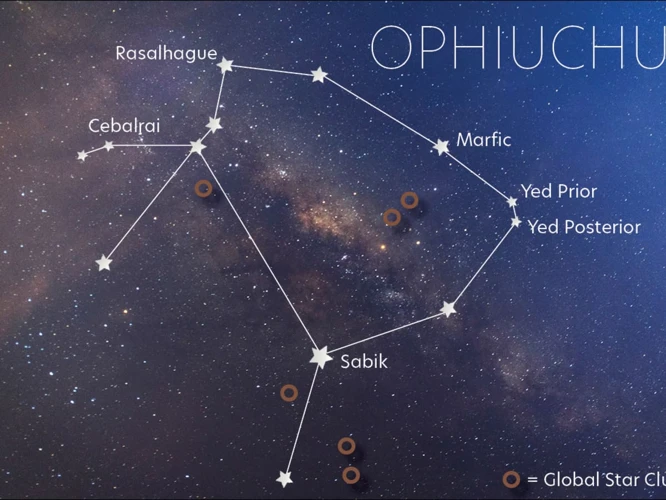
Conclusion:
Unearthing the secrets of Mayan mathematics has been a truly awe-inspiring journey. We have delved into the intricacies of their number system, witnessing the brilliance of their base-20 system and the power of positional notation. The Mayans’ ability to manipulate numbers of varying magnitudes with remarkable accuracy showcases their advanced mathematical skills. Their incorporation of zero as a distinct symbol revolutionized mathematics, leaving an indelible mark on the development of arithmetic and beyond.
Furthermore, the Mayans’ advanced understanding of mathematics was not limited to basic operations. Their knowledge extended into complex mathematical concepts, as evidenced by their use of the place value system. This system allowed them to record and calculate astronomical observations, an area where they excelled. Their astronomical connections demonstrate their deep understanding of celestial movements and their ability to create accurate calendars, a testament to their mathematical prowess.
Deciphering Mayan mathematical texts has provided a glimpse into the intellectual world of this ancient civilization. By comparing Mayan mathematics with other ancient systems, we can appreciate the unique contributions the Mayans made to the field of mathematics. Their architectural designs, intricately tied to mathematical principles, showcase their mathematical ingenuity. Additionally, their observational skills in astronomy reveal a profound understanding of the cosmos.
Through these discoveries, it becomes evident that the Mayans’ mathematical achievements were far ahead of their time. They laid the groundwork for modern mathematical concepts, influencing the development of arithmetic, calendars, and even architectural design. Their legacy as mathematicians transcends time, and their contributions continue to inspire and shape the world of mathematics today.
As we conclude our exploration of Mayan mathematics, we are left with a profound appreciation for the mathematical brilliance of this ancient civilization. The secrets they unlocked centuries ago still captivate and intrigue us, proving that the pursuit of knowledge knows no boundaries. Mayan mathematics stands as a testament to the ingenuity and intellectual achievements of the past, reminding us of the timeless nature of human curiosity and the power of mathematics in unraveling the mysteries of our world.
Frequently Asked Questions

FAQs About the Mayan Number System
1. How did the Mayan number system differ from the decimal system?
The Mayan number system was a base-20 vigesimal system, while the decimal system is base-10. Mayans counted in twenties instead of tens.
2. What symbols did the Mayans use to represent numbers?
The Mayans used a combination of dots (representing one) and bars (representing five) to represent numbers in their system.
3. How did the Mayan number system handle large numbers?
The Mayans used a place value system, assigning different values to symbols based on their position within a number, enabling them to represent large numbers accurately.
4. Did the Mayans have a symbol for zero?
Yes, the Mayans had a unique symbol for zero, represented by a shell shape. It played a crucial role in their mathematical calculations.
5. What advantages did the Mayan number system offer?
The Mayan number system allowed for complex mathematical calculations and precise recording of numerical information due to its positional and place value systems.
6. Were there any drawbacks to the Mayan number system?
One drawback of the Mayan number system was that calculations involving fractions could be challenging due to the absence of specific symbols for fractions.
7. How did the Mayan number system influence their architectural design?
The Mayan number system’s precision and mathematical abilities influenced architectural designs, ensuring structures were built with accurate proportions and alignments.
8. Did the Mayan number system have any connections to their astronomical observations?
Yes, the Mayans used their number system to make calculations and observations in astronomy, enabling them to track celestial events and create calendars.
9. Was the Mayan number system similar to other ancient civilizations’ number systems?
While the Mayan number system shares some similarities with other ancient number systems, such as the concept of place value, it has unique characteristics that set it apart.
10. How did the Mayan number system influence modern mathematics?
The concept of zero in the Mayan number system was groundbreaking and had a profound impact on the development of modern mathematics, particularly in arithmetic and algebra.
References
- Twenty Count: Secret Mathematical System of the Aztec …
- Uncovering the Secrets of Ancient Mayan Civilization
Frequently Asked Questions

1. What is the Mayan number system?
The Mayan number system is a base-20 numerical system used by the ancient Mayans to represent quantities. It is a highly advanced system with unique symbols for each digit.
2. How did the Mayans perform basic mathematical operations?
The Mayans were adept at performing addition, subtraction, multiplication, and division using their number system. They used a combination of symbols and positional notation to carry out these operations.
3. What role did zero play in Mayan mathematics?
Zero was crucial in Mayan mathematics as it allowed the representation of larger numbers and enabled more advanced calculations. The Mayans were one of the first civilizations to recognize and use zero as a placeholder in their number system.
4. What are some advanced mathematical concepts in Mayan mathematics?
In addition to basic operations, the Mayans developed a sophisticated place value system, which allowed them to represent and calculate large numbers. They also used their mathematical knowledge to create intricate calendars and unique mathematical notations.
5. Are there any connections between Mayan mathematics and astronomy?
Absolutely! The Mayans had a deep understanding of astronomy, and their mathematical prowess was instrumental in creating accurate astronomical observations. Their calendars were based on complex mathematical calculations and aligned with celestial events.
6. What were some of the Mayan mathematical achievements?
The Mayans applied their mathematical knowledge in various aspects of their civilization. They used mathematics to design awe-inspiring architectural structures with precise dimensions and proportions. They also made significant contributions to the field of astronomy through their astronomical observations.
7. How do researchers decipher Mayan mathematical texts?
Deciphering Mayan mathematical texts involves a combination of archaeology, linguistics, and mathematical analysis. Researchers analyze the symbols and patterns present in the texts and compare them to known Mayan mathematical concepts to unlock their meaning.
8. How does Mayan mathematics compare to other ancient mathematical systems?
Mayan mathematics stands out for its unique base-20 numbering system and advanced understanding of zero. While other ancient civilizations had their own numerical systems, the Mayans developed a comprehensive mathematical framework that rivaled those of other cultures.
9. What contributions did Mayan mathematics make to modern mathematics?
Mayan mathematics introduced innovative concepts such as zero and a sophisticated place value system. These concepts laid the foundation for future mathematical developments and greatly influenced the numerical systems used in modern mathematics.
10. What can we learn from studying Mayan mathematics today?
Studying Mayan mathematics not only provides insights into the advanced mathematical capabilities of an ancient civilization but also offers valuable lessons in the development and application of mathematical concepts. It reminds us of the universality of mathematics and its significance in various aspects of human culture and knowledge.







